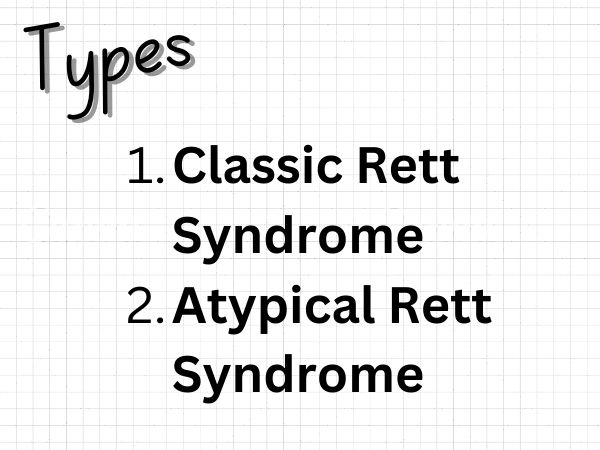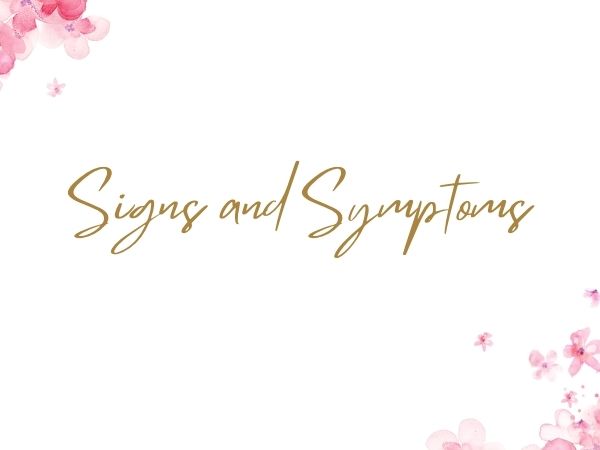Rett Syndrome is a rare genetic disorder that affects brain development, primarily in females. It’s estimated to occur in about 1 in every 10,000 to 15,000 live female births. Rett Syndrome presents unique challenges to affected individuals and their families, requiring specialized care and support. In this article, we’ll explore the types, signs, symptoms, causes, prevention, treatment, diagnosis, and potential home remedies for Rett Syndrome.
Types of Rett Syndrome

There is one primary type of Rett Syndrome, which is classic or typical Rett’s disorder. However, there are also atypical variants, which include preserved speech variants, congenital variants, and early seizure variants. These variants may present with different symptoms and severity levels, but they are all related to mutations in the MECP2 gene.
There are two main types of Rett’s disorder: Classic and Atypical. The two types may differ by their symptoms or by the specific gene mutation.
- Classic Rett Syndrome: It involves a period of normal development followed by loss of acquired skills, particularly in motor and language functions, typically between 6 months and 2 years of age. Symptoms include repetitive hand movements, difficulties with walking and coordination, seizures, breathing irregularities, and intellectual disability.
- Atypical Rett Syndrome: This encompasses a broader range of symptoms and presentations compared to classic Rett’s disorder. It may include some but not all of the classical symptoms, and may also have additional features not commonly associated with classic Rett’s disorder. Variations include preserved speech variant, congenital variant, and early seizure variant. Diagnosis can be more challenging due to the variability in symptoms.
Signs and Symptoms

The signs and symptoms of Rett Syndrome typically become apparent between 6 months and 2 years of age, after a period of apparently normal development. Common signs and symptoms include:
- Loss of motor skills: Children with Rett’s disorder often experience a loss of purposeful hand skills such as grasping objects and using them purposefully.
- Language and communication difficulties: Many individuals with Rett’s disorder do not develop spoken language, and those who do may lose the ability to speak over time.
- Social and cognitive impairments: Children with Rett’s disorder may have difficulty with social interactions and may exhibit repetitive movements or behaviors.
- Breathing problems: Individuals with Rett’s disorder may experience irregular breathing patterns, breath-holding episodes, and hyperventilation.
- Scoliosis: A significant number of individuals with Rett’s disorder develop scoliosis, an abnormal curvature of the spine.
Causes of Rett Syndrome

Rett Syndrome is primarily caused by mutations in the MECP2 gene, which is located on the X chromosome. The majority of cases are sporadic, meaning they occur randomly and are not inherited from parents. However, in rare cases, Rett’s disorder can be inherited if there is a family history of the disorder or if a parent carries the mutated gene.
How Is Rett Syndrome Different From Autism?
Both conditions can make it hard to communicate and socialize.
But there are key differences:
- Rett syndrome usually happens in girls, while autism spectrum disorder is much more common in boys.
- Some symptoms of Rett’s disorder don’t happen with autism spectrum disorder. These include slowed rate of head growth, loss of hand skills, less mobility, and irregular breathing.
- A child with Rett syndrome usually prefers people more than objects and likes when you show them affection. The opposite can be true in a child with autism spectrum disorder.
Prevention
As Rett Syndrome is primarily caused by genetic mutations, there are currently no known methods for preventing its occurrence. However, genetic counseling may be beneficial for families with a history of Rett’s disorder or other genetic disorders.
Treatment of Rett Syndrome

Currently, there is no cure for Rett’s disorder. However, there are various treatments and therapies available to help manage symptoms and improve the quality of life for individuals with the disorder. These may include:
- Physical therapy: Helps individuals with Rett’s disorder improve motor skills, maintain mobility, and prevent complications such as scoliosis.
- Occupational therapy: Focuses on developing skills needed for daily activities and improving independence.
- Speech therapy: Aims to improve communication skills and may involve alternative communication methods such as sign language or the use of communication devices.
- Medications: Certain medications may be prescribed to manage symptoms such as seizures, breathing difficulties, and behavioral issues associated with Rett Syndrome.
Diagnosis
Diagnosing Rett Syndrome can be challenging, as its symptoms may overlap with other developmental disorders. Diagnosis is typically based on clinical evaluation, medical history, and genetic testing to identify mutations in the MECP2 gene.
Home Remedies and Support

While there are no specific home remedies for Rett Syndrome, creating a supportive environment at home can help improve the quality of life for individuals with the disorder. This may include:
- Establishing routines: Consistent routines and schedules can help provide structure and predictability for individuals with Rett Syndrome.
- Creating a sensory-friendly environment: Minimizing noise and distractions and providing sensory stimulation through activities such as music therapy or sensory play can be beneficial.
- Seeking support: Joining support groups or connecting with other families affected by Rett’s disorder can provide valuable emotional support and resources.
- Promoting physical activity: Encouraging regular physical activity appropriate for the individual’s abilities can help improve motor skills and overall health.
In conclusion, Rett Syndrome is a complex disorder that presents unique challenges for affected individuals and their families. While there is currently no cure, early intervention and appropriate therapies can help manage symptoms and improve the quality of life for individuals living with Rett’s disorder. Continued research into the underlying causes and potential treatments is essential to better understand and support those affected by this rare genetic disorder.